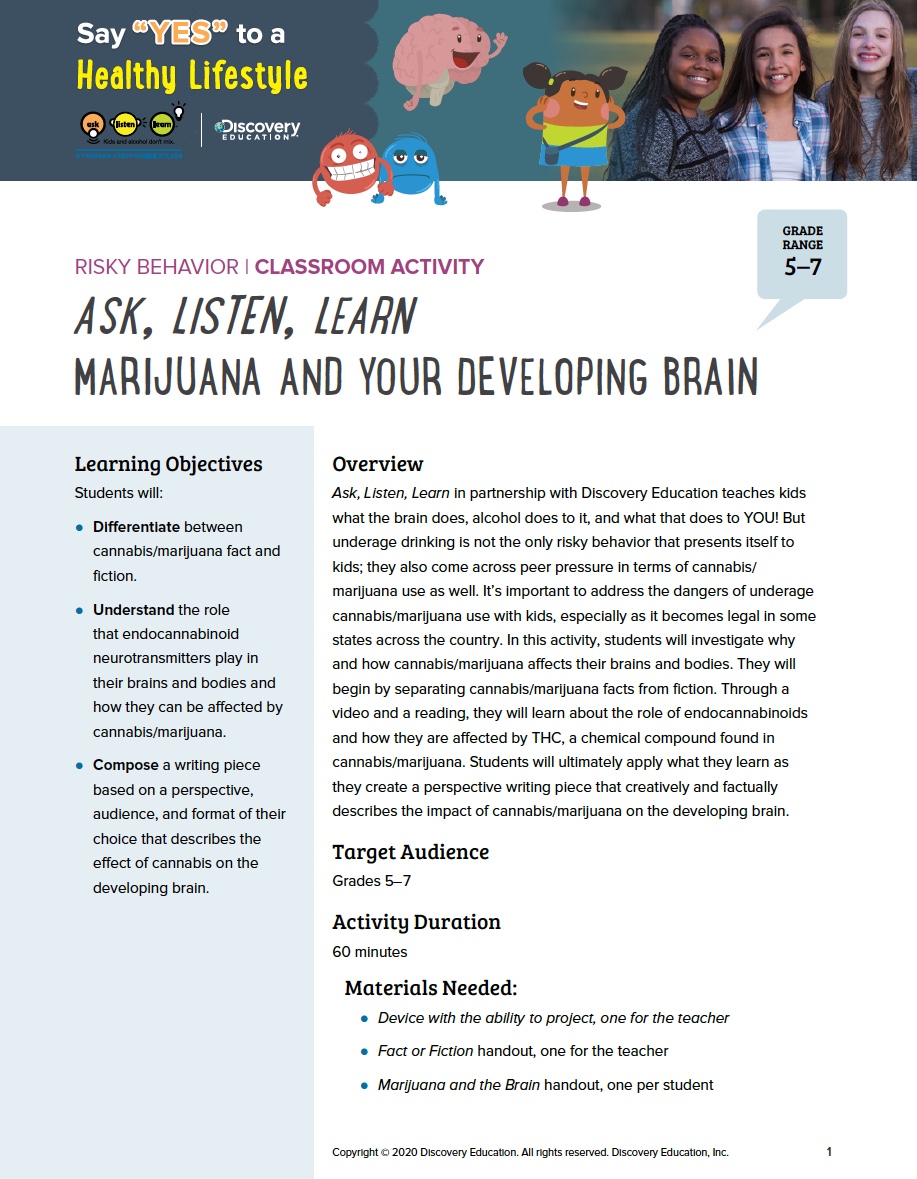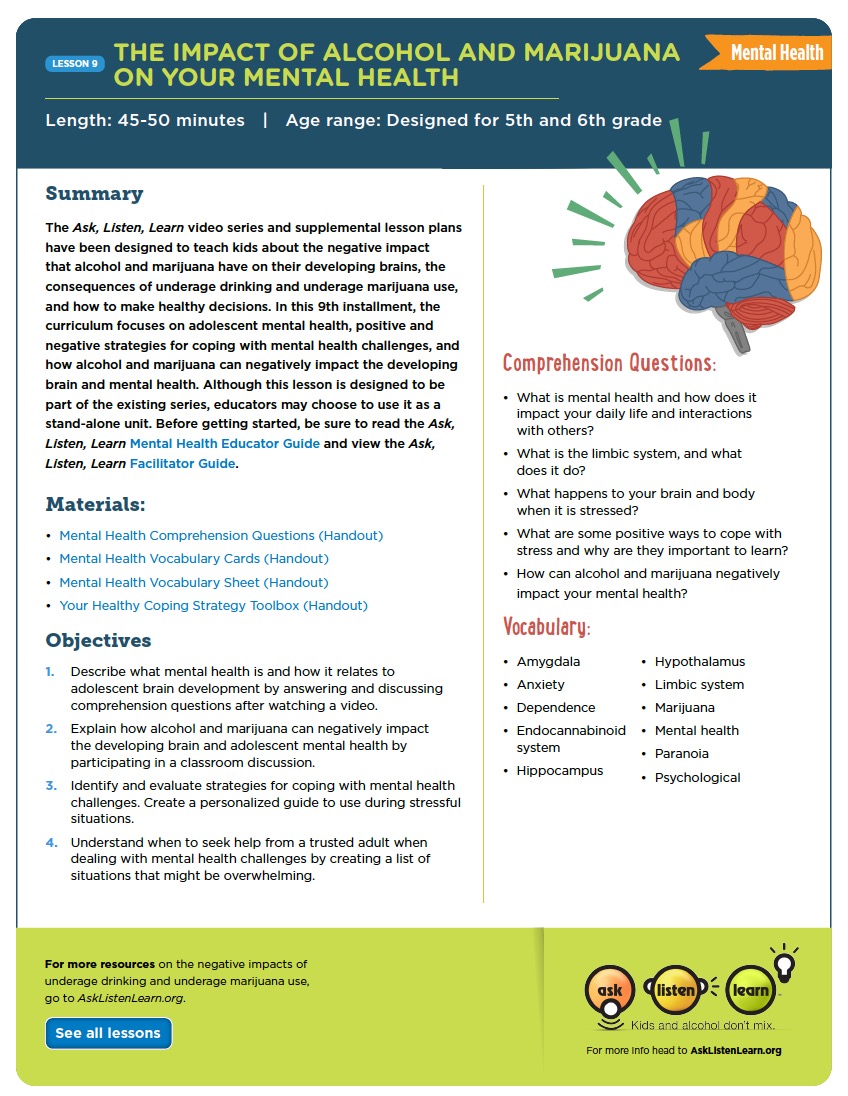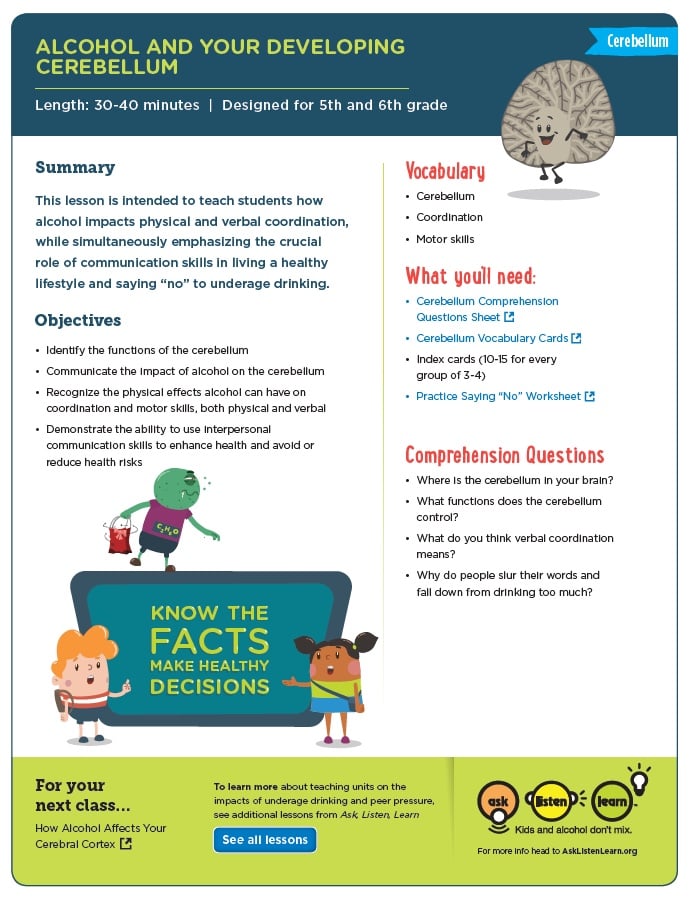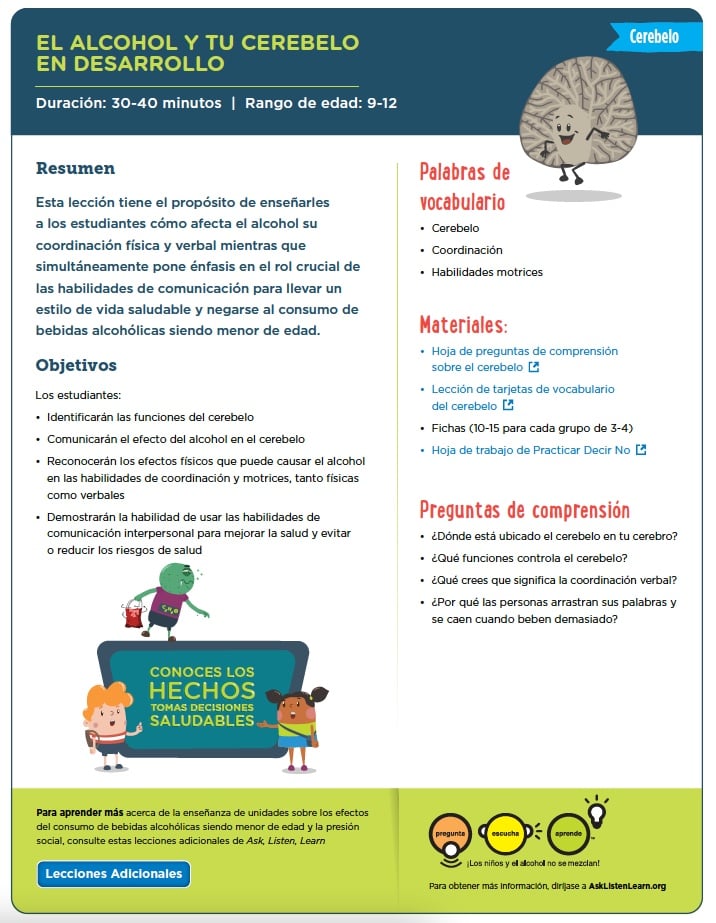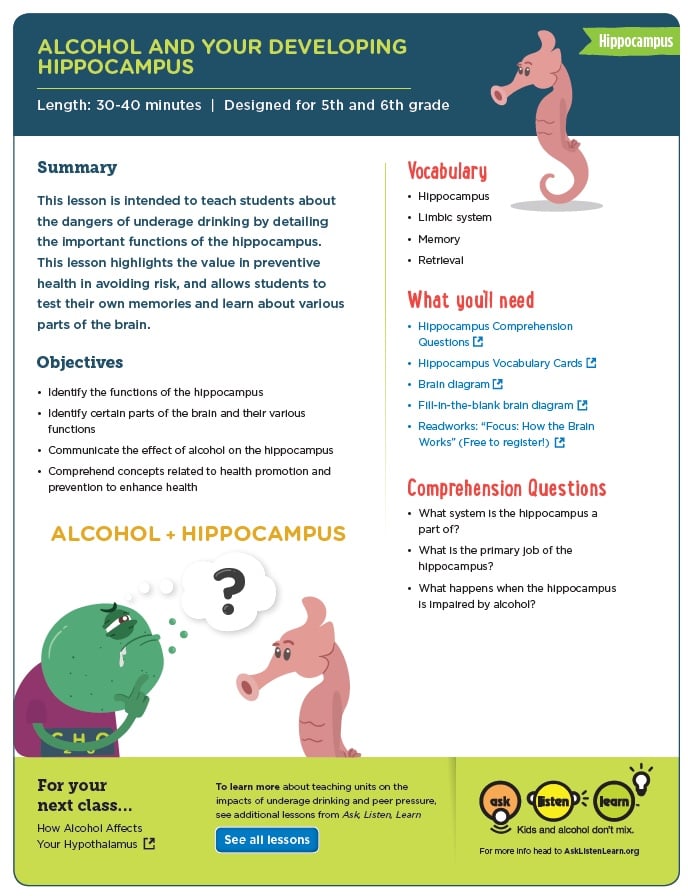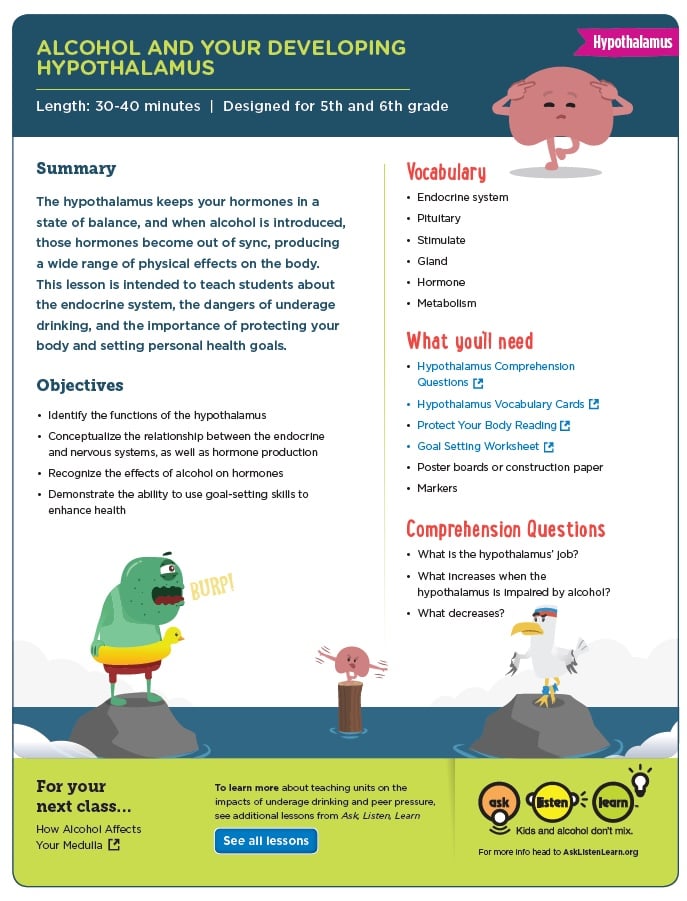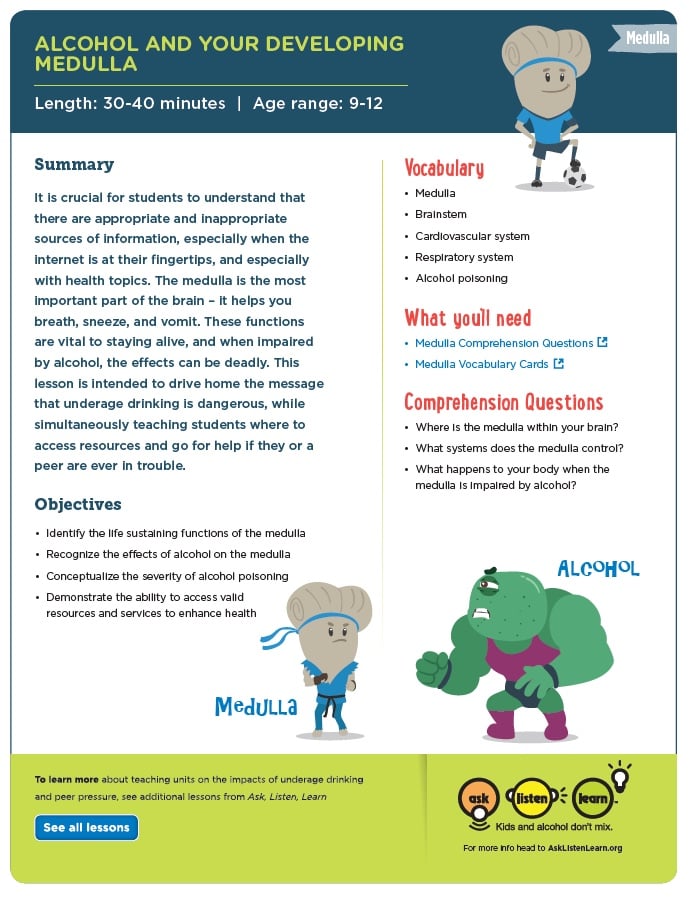About This Lesson
Ask, Listen, Learn in partnership with Discovery Education teaches kids what the brain does, alcohol does to it, and what that does to YOU! But underage drinking is not the only risky behavior that presents itself to kids; they also come across peer pressure in terms of cannabis use as well. It’s important to address the dangers of underage cannabis use with kids, especially as it becomes legal in some states across the country.
In this activity, students will investigate why and how cannabis affects their brains and bodies. They will begin by separating cannabis facts from fiction. Through a video and a reading, they will learn about the role of endocannabinoids and how they are affected by THC, a chemical compound found in cannabis. Students will ultimately apply what they learn as they create a perspective writing piece that creatively and factually describes the impact of cannabis on the developing brain.
Students will:
- Differentiate between cannabis fact and fiction.
- Understand the role that endocannabinoid neurotransmitters play in their brains and bodies and how they can be affected by cannabis.
- Compose a writing piece based on a perspective, audience, and format of their choice that describes the effect of cannabis on the developing brain
Time required:
- 60 minutes
Student Materials
- Device with the ability for the teacher to project
- Fact or Fiction handout (one for the teacher)
- Marijuana and the Brain handout (one per student)





